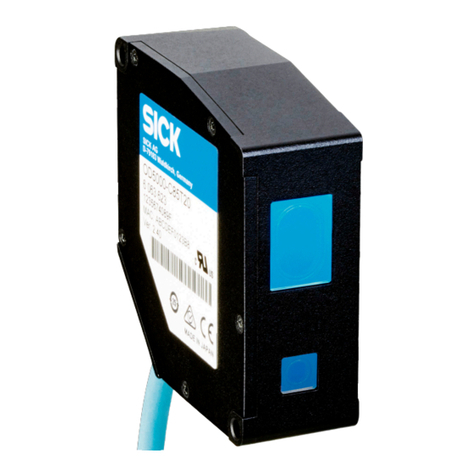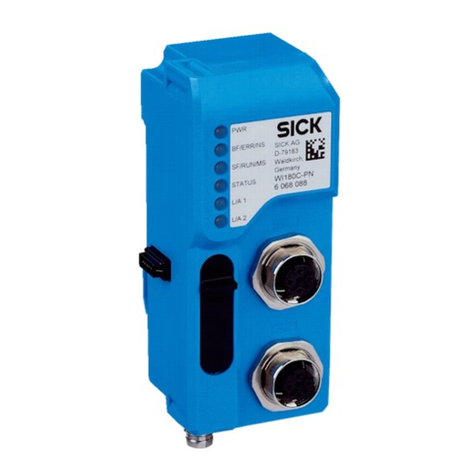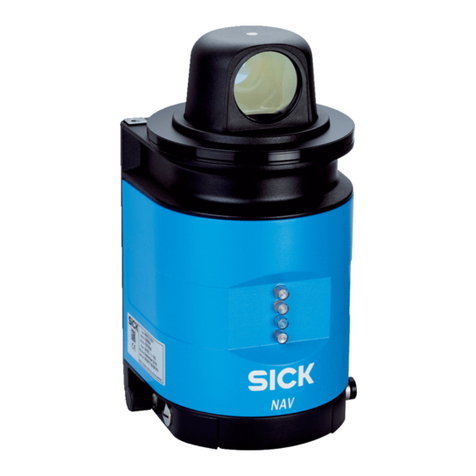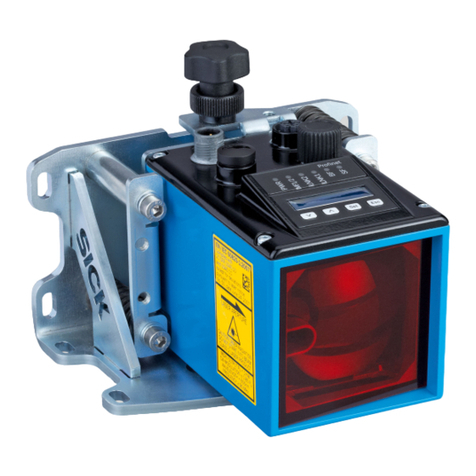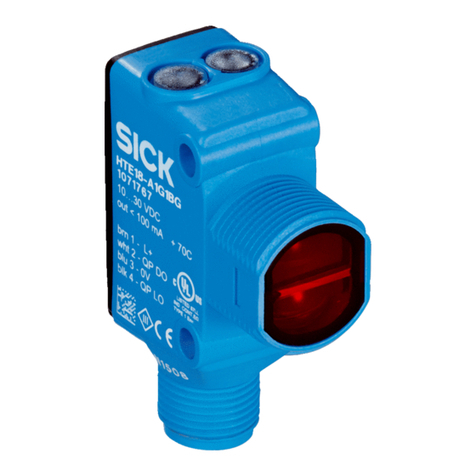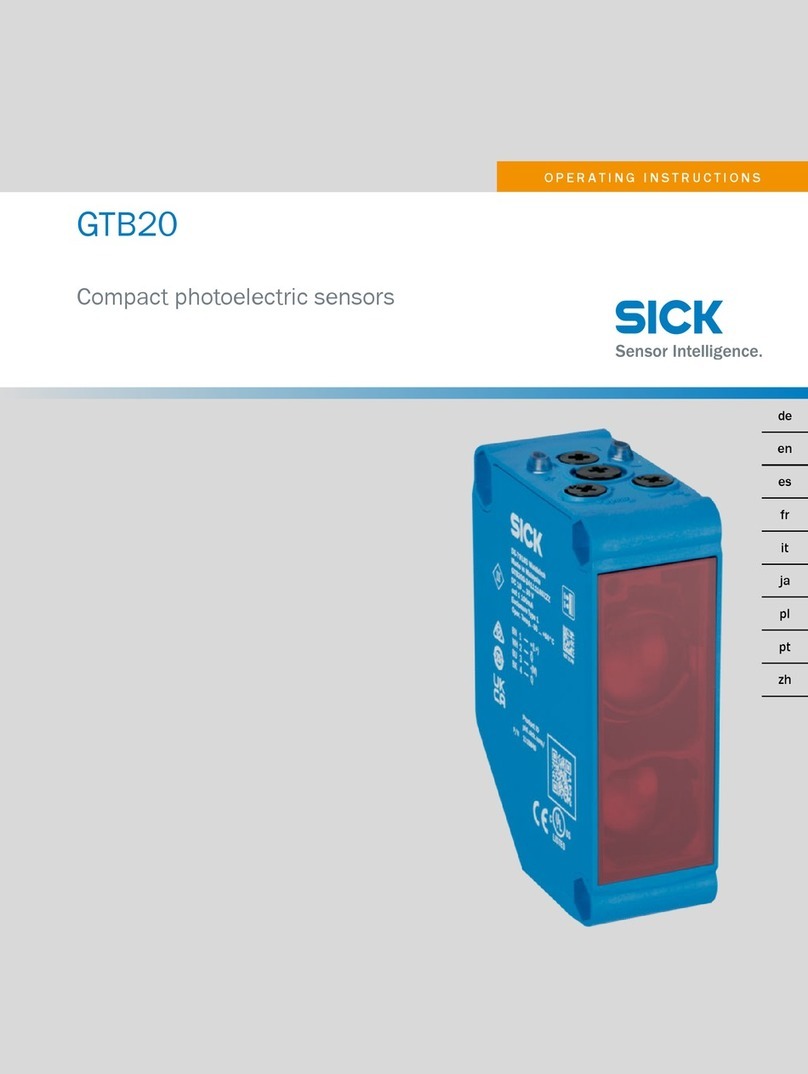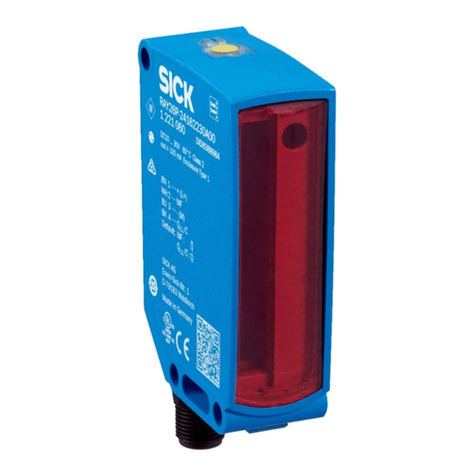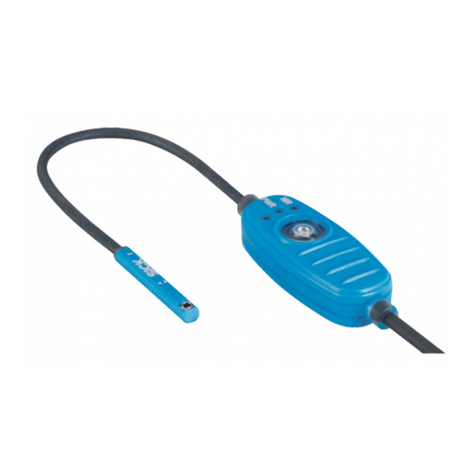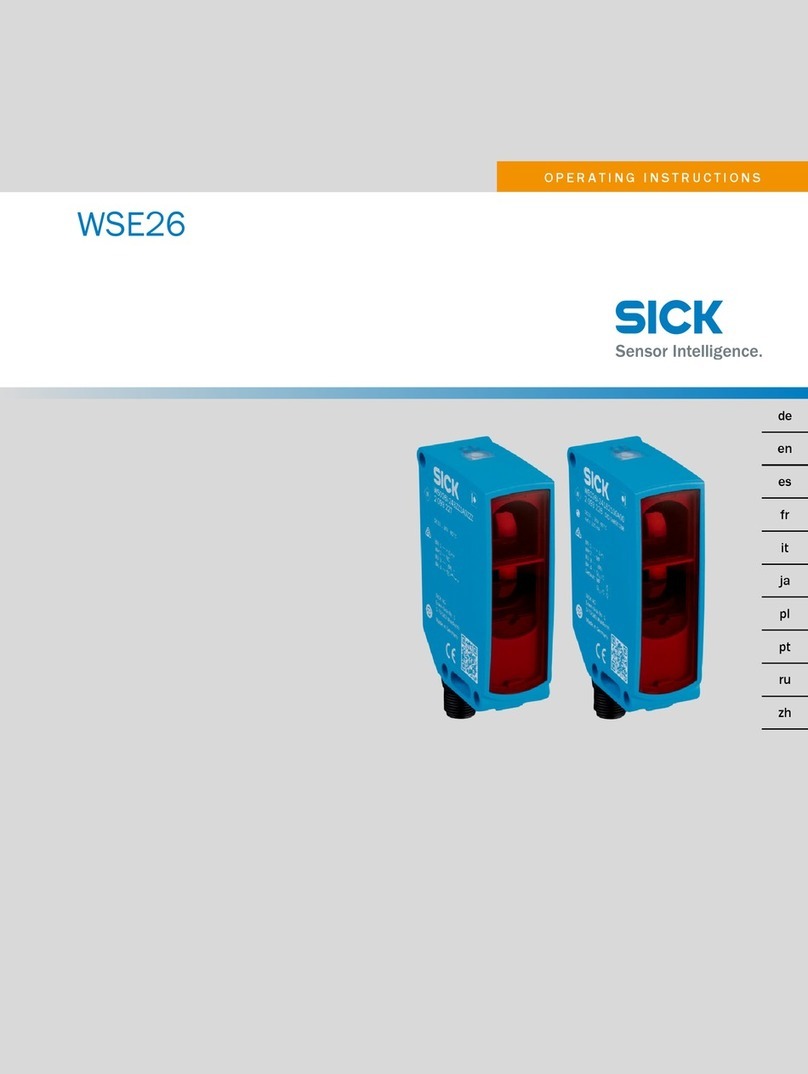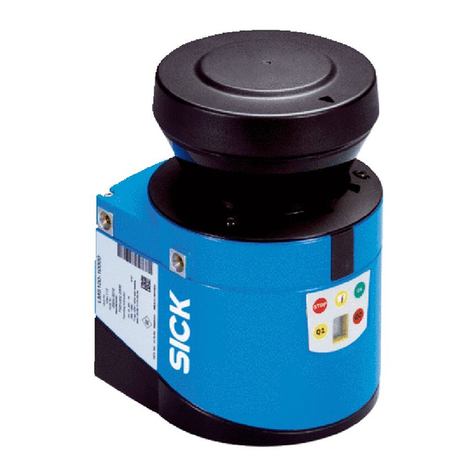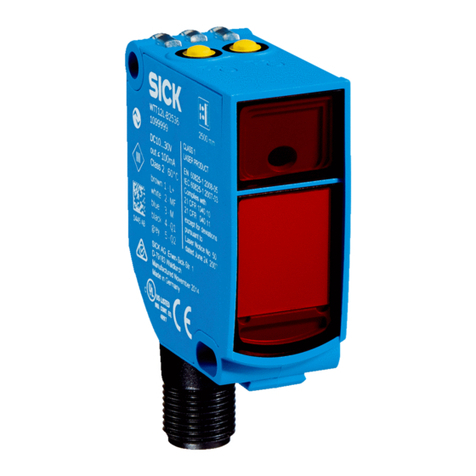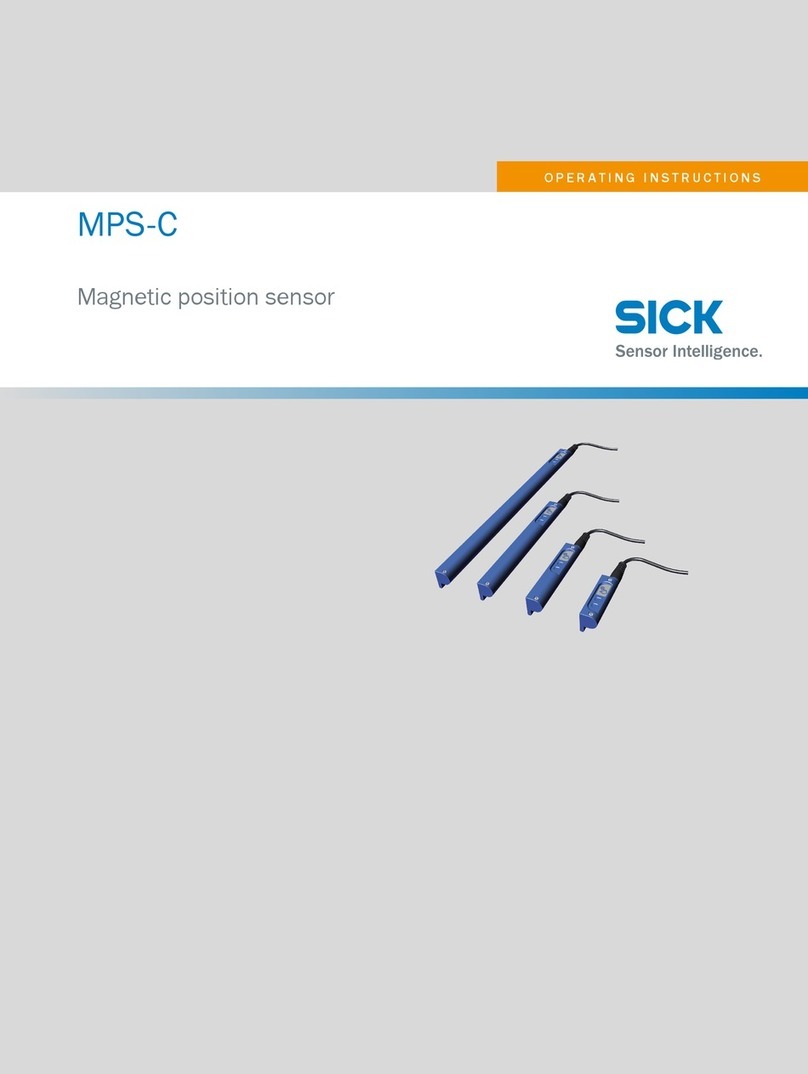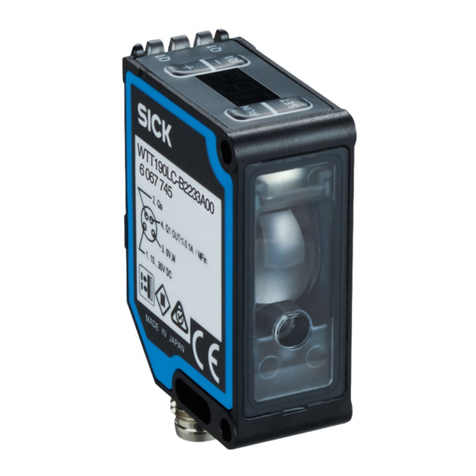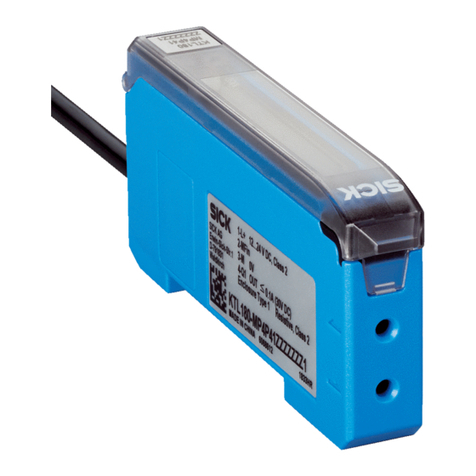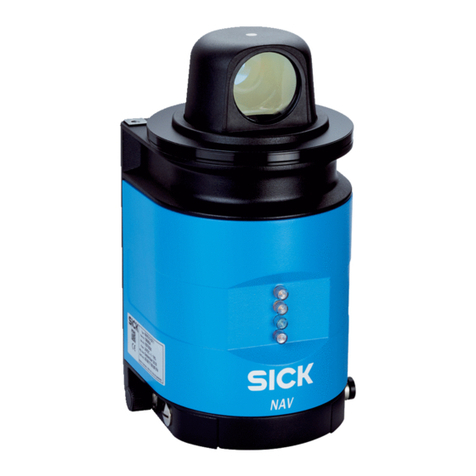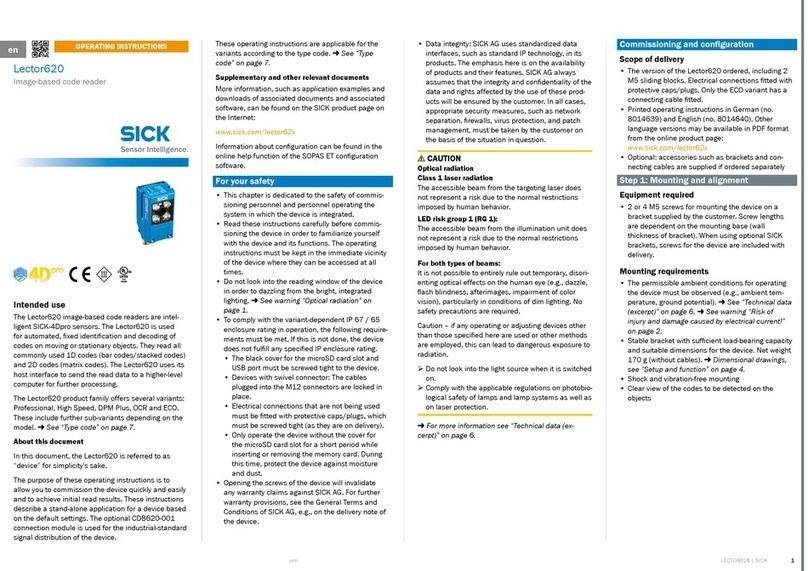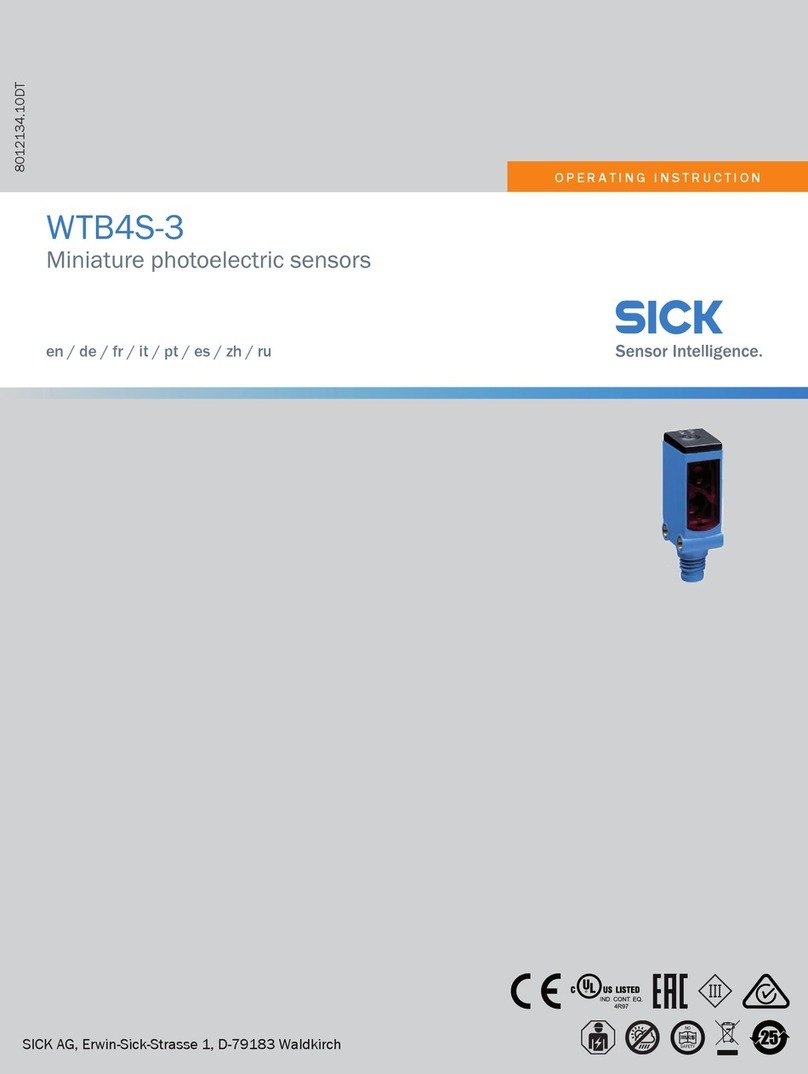
Contents
1 About this document........................................................................ 5
1.1 Information on the operating instructions.............................................. 5
1.2 Explanation of symbols............................................................................ 5
1.3 Scope of delivery....................................................................................... 6
1.4 SICK service.............................................................................................. 6
1.5 Type label.................................................................................................. 6
2 Safety information............................................................................ 7
2.1 Intended use............................................................................................. 7
2.2 Improper use............................................................................................. 7
2.3 Limitation of liability................................................................................. 7
2.4 Modifications and conversions................................................................ 7
2.5 Requirements for skilled persons and operating personnel.................. 8
2.6 Operational safety and particular hazards.............................................. 8
2.7 Warning signs on the device.................................................................... 9
2.8 UL conformity............................................................................................ 10
3 Transport and storage....................................................................... 11
3.1 Transport................................................................................................... 11
3.2 Transport inspection................................................................................. 11
3.3 Storage...................................................................................................... 11
4 Mounting............................................................................................. 12
4.1 Mounting instructions............................................................................... 12
4.2 Mounting the device................................................................................. 12
5 Electrical installation........................................................................ 13
5.1 Safety......................................................................................................... 13
5.2 Wiring instructions.................................................................................... 13
5.3 Connecting the sensor electrically........................................................... 15
6 Operation............................................................................................ 17
6.1 General notes............................................................................................ 17
6.2 Control elements and status indicators.................................................. 17
6.2.1 Indicator lights......................................................................... 17
6.2.2 Display...................................................................................... 18
6.3 Operating options..................................................................................... 19
6.3.1 Operation via pushbuttons and display.................................. 19
6.3.2 Operation via SOPAS ET.......................................................... 20
6.3.3 Operation via SOPASair (Wi-Fi)................................................ 21
6.3.4 Operation via IO-Link............................................................... 21
6.3.5 Operation via multifunctional input (MF)............................... 22
6.4 Description of operation........................................................................... 22
6.4.1 Switching mode for Q1 (“ModeQ1”)......................................... 22
CONTENTS
8017154/1AVV/2021-03-24 | SICK O P E R A T I N G I N S T R U C T I O N S | DT50-2 Pro 3
Subject to change without notice
